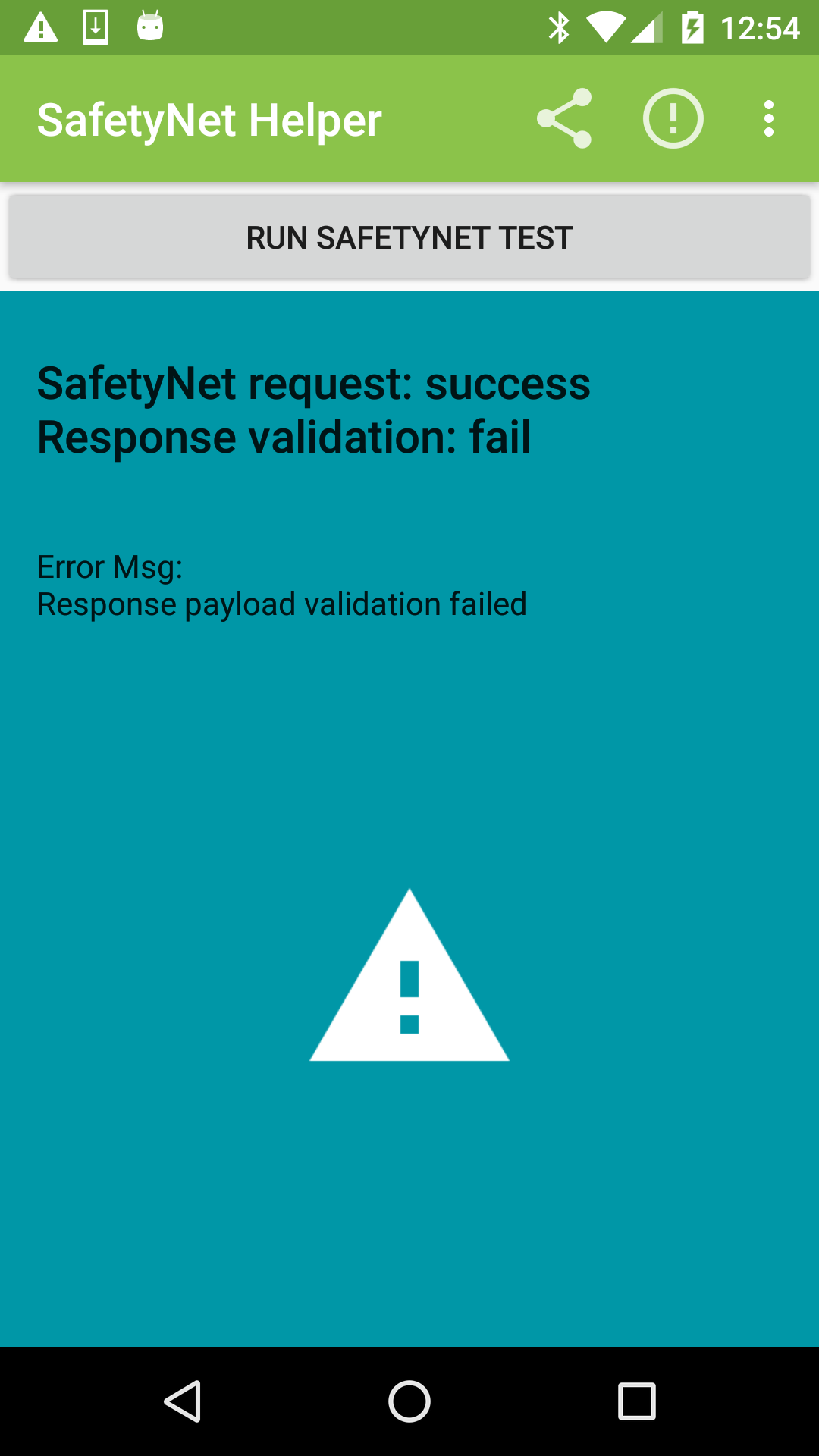SafetyNet Helper wraps the Google Play Services SafetyNet.API and verifies Safety Net API response with the Android Device Verification API. The SafetyNet.API analyses the device your app is running on to test its software/hardware configuration matches that of a device that has passed the Android Compatibility Test Suite (CTS). Note this is a client only validation, it's recommended to include server side validation.
Rooted devices seem to cause ctsProfileMatch=false.
Recommend reading the developers guide to getting started with SafetyNet
Extract from Android SafetyNet API doc
Check if your app is running on a device that matches a device model that has passed Android compatibility testing. This analysis can help you determine if your app will work as expected on the device where it is installed. The service evaluates both software and hardware characteristics of the device, and may use hardware roots of trust, when available.
Since this library release Google has created an Safety Net Sample
- Calls Google play services Safety Net test
- Local verification of request
- Verifies Safety Net API response with the Android Device Verification API (over SSL pinned connection)
- Google Play services (specifically the SafetyNet API 'com.google.android.gms:play-services-safetynet:17.0.0')
- Requires Internet permission
- Google API key for the Android Device Verification API
This library was built to get app developers up and going with SafetyNet attest API.
With skill and time any device based checks can be bypassed. This is why the validation must be handled by the server. Therefore you should look at implementing more robust and secure validation of the attest response via a server-side component.
- App requests the nonce / request token from your server
- Call
SafetyNet.getClient(context).attest(requestNonce, apiKey) - When the Pass the
JwsResultreturned as part of the SafetyNet success response to your server for validation i.e- Check the nonce/request token matches the expected value
- verify the SafetyNet response is from Google using the Android Device Verification API
- verify app package, timestamp, apk and certificate digests
- Based on the validation result your server can choose whether to trust the app install. The action you take is dependent on your app, you could log the user out by revoking OAUTH tokens or flag any high scores as potential cheating.
You'll need to get a API key from the Google developer console to allow you to verify with the Android Device Verification API (in the sample project this is set via a BuildConfig field to keep my api key out of GitHub)
final SafetyNetHelper safetyNetHelper = new SafetyNetHelper(API_KEY);
safetyNetHelper.requestTest(context, new SafetyNetHelper.SafetyNetWrapperCallback() {
@Override
public void error(int errorCode, String msg) {
//handle and retry depending on errorCode
Log.e(TAG, msg);
}
@Override
public void success(boolean ctsProfileMatch, boolean basicIntegrity) {
if (ctsProfileMatch) {
//profile of the device running your app matches the profile of a device that has passed Android compatibility testing.
else if(basicIntegrity){
//then the device running your app likely wasn't tampered with, but the device has not necessarily passed Android compatibility testing.
} else {
//handle fail, maybe warn user device is unsupported or in compromised state? (this is up to you!)
}
}
});This library is not released in Maven Central, until then you can add as a library module or use JitPack.io
add remote maven url
repositories {
maven {
url "https://jitpack.io"
}
}then add a library dependency
dependencies {
compile 'com.github.scottyab:safetynethelper:<latest version>'
}The sample app illustrates the helper library in practice. Test your own devices today. It's available on the playstore.
Copyright (c) 2022 Scott Alexander-Bown
Licensed under the Apache License, Version 2.0 (the "License");
you may not use this file except in compliance with the License.
You may obtain a copy of the License at



